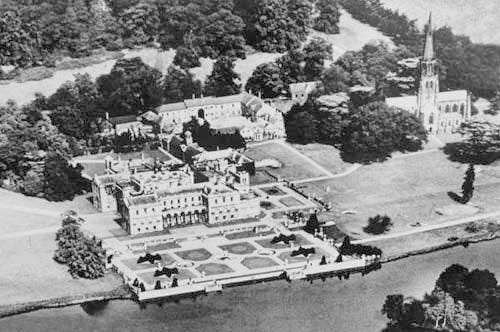Where did lawns even come from? 🤔
Hi friend,Have you ever wondered about the history behind lawns? Where did they come from? Why do we have them? Well, lawns can be traced back directly to the colonization of America. There are no turf grasses that are native to North America, including “Kentucky” bluegrass. European settlers brought these grasses with them from Europe to feed their livestock. Manors owned by the upper class in England had large lawn-like areas of turf grass surrounding the buildings. These areas were used to “entertain guests.” But they were also seen as a status symbol sending the message that “I own so much land, I can use some of it for nothing.”
Thomas Jefferson was notable for adopting this idealogy and using some of his land for nothing as a symbol of wealth However, the modern lawn as we know it can be attributed to a landscape architect from the mid-1800s named Frederick Law OlmstedIn 1868, Olmsted was commissioned to design the first American suburbs outside of Chicago. He drew inspiration from English manors as a way for middle-class Americans to present the appearance of wealth The first lawns in the US were made from these designs, creating the “American Dream” of a home with a white picket fence Not only did the concept of lawns spread nationwide as a design feature but also as a policy.Today city ordinances and HOAs across the US have mandated lawns as the standard. Even though lawns add little benefit to anything while actively causing a lot of harm to the planet. Americans have now taken up an amount of land similar in size to the whole state of Minnesota with lawns solely for the sake of aesthetics and status symbols And we’ve done this at the cost of the health of our planet and our peopleSo, in 2024 when we just experienced the hottest year in recorded history and we're living through a mass extinction event... It’s time for that to changeOur yards can be used to actively fight climate change, restore biodiversity, and grow food You don’t have to replace your entire lawn at once (or ever for that matter) to make a difference. Even just converting a portion of your yard into a native garden has a huge positive impact. Need help making the change?Enrollment is opening soon for my online course Gardening for the Future!
|
Native Yardening
Ecologist helping North American growers use their yards to help fight the climate crisis 🌻
Hi friend, Something I hear a lot from people when I’m discussing invasive plants is, “But my parent/grandparent/sibling/friend, etc. gave me this plant as a gift, and that person has since passed away. It has sentimental value to me, and I don’t want to get rid of it.” Interestingly, this seems to happen a lot with butterfly bush (Buddleja davidii), a very harmful but popular invasive species across North America. Perhaps it’s bad luck to gift someone this invasive shrub 😉 (just...
Hi friend, When I started my eco-garden, my yard was absolutely overtaken by invasive plants. English ivy, burdock, wintercreeper, Amur honeysuckle, rose of Sharon, ground ivy, and garlic mustard just to name a few. And the first step toward getting rid of the invasive species and letting in volunteer native plants is knowing what’s growing. It’s common for gardeners to just broadly pull “weeds” without really knowing what they’re pulling. Then you end up accidentally killing free native...
Hi friend, We've all heard that monarch butterfly populations are declining. But what should we do (and not do) to help them? The way we protect monarch butterflies is by restoring their wild habitat, avoiding insecticides, and planting native. When humans try to further interfere with nature by captive rearing monarchs or keeping caterpillars away from predators, it does more harm than good to the overall population. It’s easy to think, “Well, monarch populations are decreasing, so the...
